 By Jake Cordero
By Jake Cordero
Radiesthesia. Cleidomancy. Rhabdomancy. Each refers to similar (although not identical) practices in which the seeker employs a swinging pendulum or some other “prothesis” to find a lost or hidden object, to foretell the future or to request guidance from the spirit world. Dowsing for water, for instance, is a common form of rhabdomancy. The Bathsheba Everdene character in Thomas Hardy’s Far from the Maddening Crowd also employed rhabdomancy to identify her future husband.

We find examples of radiesthesia-like practices throughout folklore — some African-Caribbean, some South American. The term itself, however, was not coined until 1927 when French priest Alex Bouly created the neologism by combining the Latin words for radiation and perception. Bouly also founded the Society of Friends of Radiesthesia, and then six years later Col. A H Bell formed the British Society of Dowsers. The UK dowsing organization remains active to this very day.
Merriam Webster defines Radiesthia as “sensitiveness held to enable a person with the aid of divining rod or pendulum to detect things.” Rhabdomancy is defined simply as “divination by rods or wands” and cleidomancy is defined as “divination using a suspended key.” All are closely related to the more well-known dowsing, defined by Merriam Webster “as a technique for searching for underground water, minerals, or anything invisible, by observing the motion of a pointer or the changes in direction of a pendulum.”
Some hold that the action of the pendulum or dowsing rod is driven by spirits. Others say the pendulum responds to energy fields emitted by all living things. And still others insist the pendulum responds to subtle, involuntary muscle movements and therefore reflects the subconscious will. We leave such speculation to the reader. We will attest, however, that radiesthesia or rhabdomancy sessions can be quite instructive for those who approach them with a curious and open mind.
HOW-TO
 One common version of rhabdomancy entails the use of a stone, ring or some other small object suspended from a short string or light chain. The sitter positions himself or herself comfortably at a table, grasps the string lightly by one end and allows the ring or stone on the other end to dangle an inch or so from the table surface. He or she then asks a question and waits for the pendulum to move. Answers to yes-or-no questions can be gleaned by observing whether the pendulum swings back and forth or in circles. An affirmative response typically is demonstrated by a back-and-forth horizontal movement, a negative response demonstrated by an up-and-down vertical movement, and no response is indicated by a circular motion. (See the chart, above.)
One common version of rhabdomancy entails the use of a stone, ring or some other small object suspended from a short string or light chain. The sitter positions himself or herself comfortably at a table, grasps the string lightly by one end and allows the ring or stone on the other end to dangle an inch or so from the table surface. He or she then asks a question and waits for the pendulum to move. Answers to yes-or-no questions can be gleaned by observing whether the pendulum swings back and forth or in circles. An affirmative response typically is demonstrated by a back-and-forth horizontal movement, a negative response demonstrated by an up-and-down vertical movement, and no response is indicated by a circular motion. (See the chart, above.)
- Another variation, similar to the first, entails the use of a wine glass as well as the swinging pendulum. The sitter places the glass on a table top, and then, while holding one end of the string, lowers the stone or ring into the glass — but in such a way that the stone or ring does not touch the sides of the glass. Again, the sitter asks a simple yes-or-no question and waits for the pendulum to begin its movement. The pendulum may begin to swing, gently tapping the side of the glass. A single tap may represent yes, double taps represent no. With this variation, one also can glean alphabetical or numerical messages. To do this, simply call out letters or numbers, slowly and in a loud voice. A pendulum tap at the moment a letter or number is called out indicates it is a meaningful part of the message.
-

Pendulum Mat from The Austin Séance Yet another version entails the use of a swinging pendulum, but also an Austin Séance Talking Board or some other similar Ouija-like device. The sitter should suspend the key from the talking board and ask a question. Watch the pendulum movement. Does the pendulum swing to a letter or word on the board? When employed in this way, the sitter may interpret the pendulum swinging to a word as part of the spirit message, while the pendulum’s circular movement may signify that one discrete message has been successfully delivered and a new one is on its way.
- A very unusual example form of radiesthia combines cleidomancy (divination using a suspended key) with bibliomancy (fortune telling from books) and comes to us from New England folklore. With this variation the sitter needs a Bible or some other book and a skeleton key. The sitter finds a passage that is particularly relevant to the question at hand — for instance, if the sitter wonders whether he or she might marry soon, then the Biblical passage from Ruth 1:16 would be appropriate: “Wherever you go, I will go; wherever you live, I will live.” However, any book will do as long as a passage in it can be found that is relevant to the question at hand. A large skeleton key with a loop handle is then placed in the book at the location of the relevant passage but in such a way that the loop handle protrudes from the top. The book is closed shut and bound very tightly with string or cord. It’s best to wrap the string both around the bottom of the book and across the top, and the book must be bound so tightly that the key cannot move easily. The bound book with protruding key is then placed on its end at the center of a table, with the loop handle of the key extending from the top. The seeker speaks the inquiry aloud, concentrates, and then — using just his fingers to grasp the edge of the key — gently lifts the book from the table. Some sitters will do so by placing their pinky in the loop of the key handle. If two sitters are present, both gently grasp the key handle together, almost as if they’re splitting a turkey wishbone. Leave the book suspended for 10 seconds or so. If, during that time, it falls frees, then the answer is yes. If it remains attached, the answer is no.
The Austin Séance
Welcome to The Austin Séance merch page. Please notice that shipping charges vary, with less expensive shipping for the talking boards and books that we handle ourselves in Austin. The Austin Séance re-invests 100 percent of net proceeds from merchandise to pay guest writers and artists.


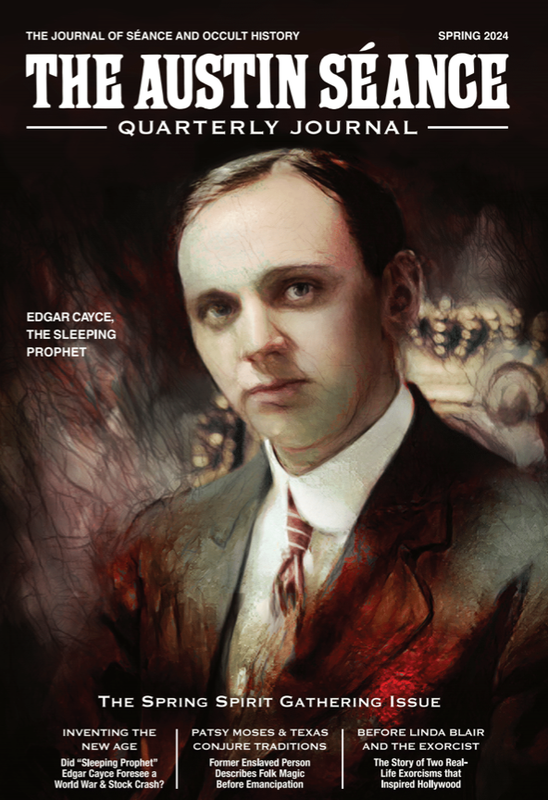
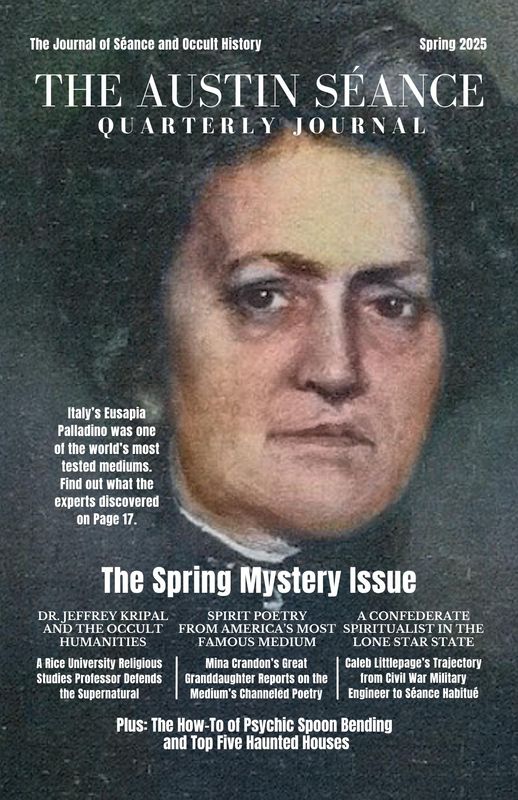
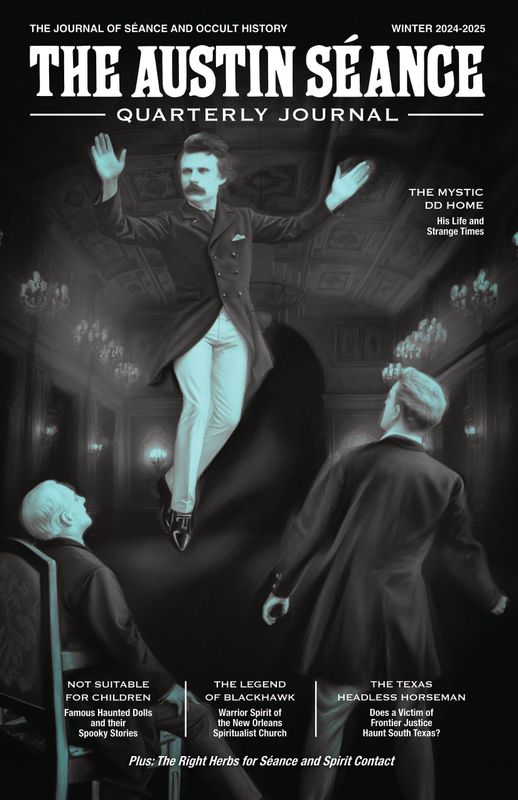
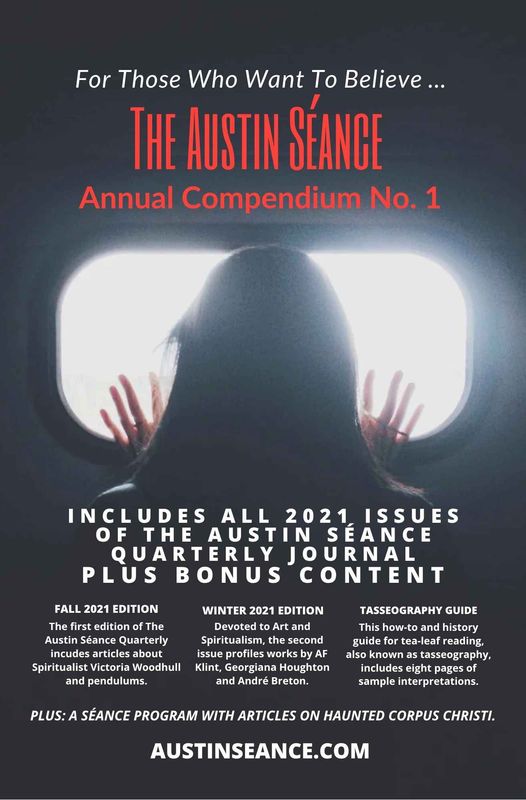
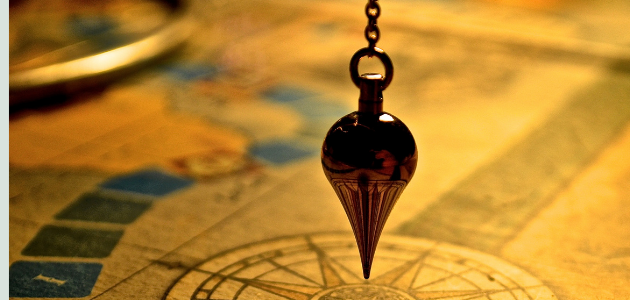
 By Jake Cordero
By Jake Cordero One common version of rhabdomancy entails the use of a stone,
One common version of rhabdomancy entails the use of a stone, 




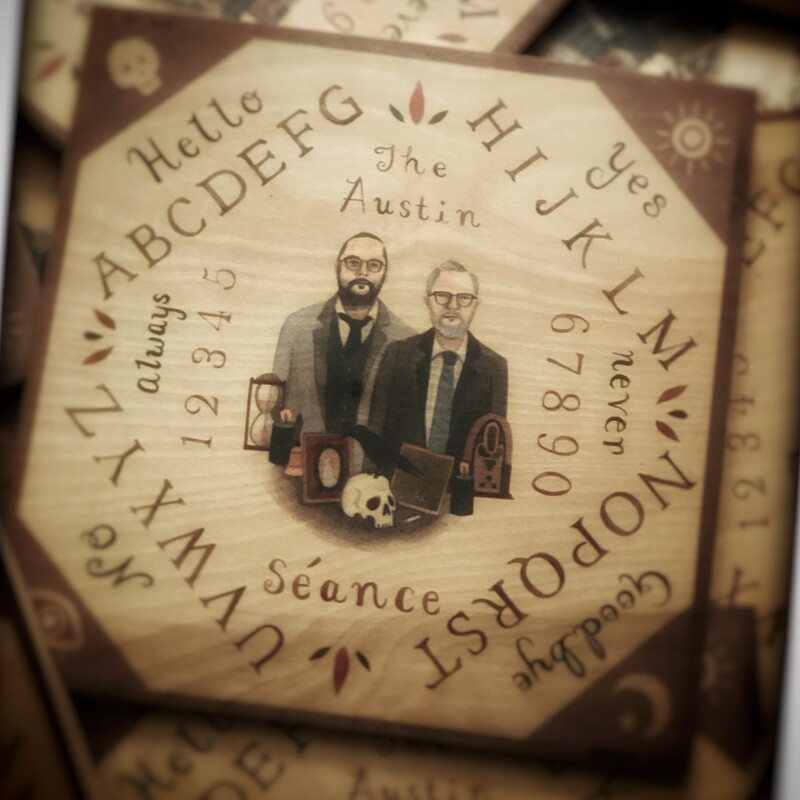

Jake,
I’m a dowser-for-health from Flagstaff and have just released The Nandia Trilogy, a series for 18-35 year olds in which dowsing figures prominently. I will be in Austin from May 22-29 and wondering if you know of guest speaking opportunities with dowsers during that period? More info about me and The Trilogy at http://www.thenandiatrilogy.com Hope to hear from you. Thanks, Ned